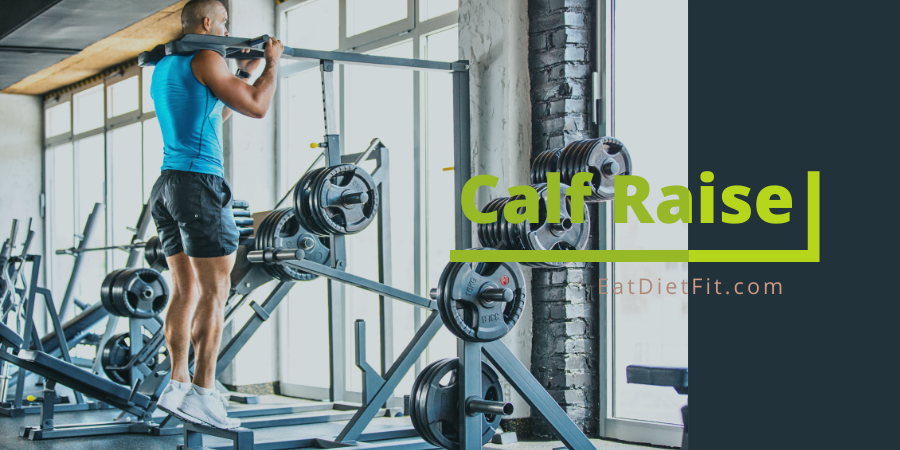Calf Raise which is performed to make calf muscles leaner and fitter. For a week’s exercise regimen, including calf muscle exercise for 3-4 times along with a proper diet will help in shaping the calf muscles.
Introduction
Calf muscles are used a lot whether you are standing or running or walking uphill. These muscles support the body in an erect posture. While dancing or jumping, your calf muscles are intensely used. These muscles are very important for the normal functioning of your body.
Some people are very disappointed with the small calves while some are frustrated about the big calves. Both big, as well as small calves, are not good looking, especially for women as they have to get dressed in attires requiring to reveal the lower part of their legs. However, one can easily get stronger, leaner and beautifully shaped lower legs by following a good exercise regimen and a healthy diet.
Before moving on to calf raise, let’s first discuss the plausible causes of calves getting fat or thin.
Why do calf muscles show variability?
Some people say they have extremely thin calf muscles while others say that they have naturally big calf muscles without even working out. How’s this possible? Let’s find out.
- Genes: Believe it or not, your genes define your body shape a lot. Your big or small calves are also responsible because of genes.
- Age: Rightfully said you start losing things as you get older. Just like this, you also lose muscle mass as you age.
- Gender: Females tend to have bigger calf muscles as compared to males.
- Athletes and Runners: Athletes and runners have good and bulky calf muscles because of the intense use of these muscles.
How to perform a calf raise?
Calf raise is a good body-weight training exercise. Following are the steps required to do a calf raise:
- In the first step, you have to stand straight with feet apart.
- You can either keep some weight in your hand or place them on your waist or place them in front of you straight.
- Now you have to keep your body weight down and simultaneously try to lift heels up in the air with the toes touching the floor.
- Very rhythmically now you have to bring your body back in the initial standing position.
- If you are holding a weight in your hands ( kettlebell, dumbbells, water bottle or any weight), then make sure to place them sidewards and down.
- While performing this exercise, the back should be straight. However, the knees can be slightly flexed.
Ready to elevate your leg day routine? Check out the Calf Raise Machine here and take the first step toward sculpted, powerful calves!
Modified versions of calf raise
Stair calf raises
This is a modified version of calf raises done on a stair.
- To perform this you have to stand on a stair with your midsection of the feet lying at the edge of the stair. And the balls of the heels hanging freely beside the edge.
- The main aim of doing a calf raise on a stair is that the stairs provide an extra depth of about 3-4 inches.
- Now you have to perform the exact procedures except that your heels won’t lie flat back against the floor but they will dive deep.
- This will exert extra pressure on your calf muscles and the shin.
- You must make sure that this movement is controlled. Any frail movement will result in tumbling down and hurting yourself.
Lunges calf raise
This is again a modified version of calf raise where you have to stand in a lunge position with your one knee on the floor and the other flexed in front of you (proposing style) making an angle of 90°.
- Stand in a lunge position.
- You can hold weight in your hands
- Perform the calf raise of the leg which is in front of you.
- This version helps in increasing the flexibility of your calf muscles as well as your pelvic girdle.
- To make it tougher, don’t touch the knee of the back leg on the floor.
What are the benefits of the calf raise?
Calf muscles are stubborn muscles, they don’t get leaner or bulkier very easily. So, calf raise is so far the most effective exercise to maintain a good shape of calf muscles.
Following are the benefits of doing calf raises:
- Stronger and leaner lower legs.
- Increased working capacity of lower legs.
Where do Calf raises targets?
- Gastrocnemius muscles: These are the outer or superficial muscles of the lower limb.
- Soleus muscles: These are the deep muscles of the lower limb.
Together these muscles form the calf muscles and they are also responsible for pumping the blood up against gravity. So, the stronger the calf muscles, the better is the blood pumping by them.
Precautions
Calf raise is a bodyweight training exercise. If you want to go on a tougher side, then you can hold weights in your hands. So the only precaution that is to be taken while performing calf raises is control and coordination of your body as there are chances of falling off if care is not taken.




No responses yet